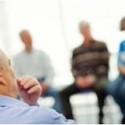Joe Gerstein, founder of the Smart Recovery treatment programme that is spreading from the US as an alternative to AA, explains why he rejects the myth that alcoholism is a ‘disease’ to be endured rather than cured Alcoholism is a disease that leaves victims powerless and needing to stay in permanent recovery if they are….
Continue reading ›
The number of children committing drink-related crime has rocketed by more than a quarter in four years, figures show. Nearly 40,000 children have been fined, cautioned or taken to court for abusing alcohol between 2003 and 2007, according to official statistics. More than 6,000 children aged ten to 15 were handed police cautions or taken….
Continue reading ›
Don’t help your babies grow up to be drunkards. It’s a message that some parents should take to heart, especially in hard-drinking Bay County, where teens apparently have easy access to alcohol. Because it’s sometimes provided by parents. In fact, wrong-headed adults are hosting parties at their houses for kids to consume alcohol in a….
Continue reading ›

It can be heartbreaking for a family to see a member suffering form drug or alcohol addiction. Many cannot understand how their loved one has turned to drugs or alcohol, and often feel guilty. It can be tremendously confusing, and extremely stressful for families to watch their loves one’s life being controlled by drugs or….
Continue reading ›
A study has revealed that there has been a substantial reduction in binge drinking among people of all ages, except college students, ever since the national drinking age in America was set at 21 about two decades ago. The research from Washington University School of Medicine in St. Louis also found that the rates of….
Continue reading ›
